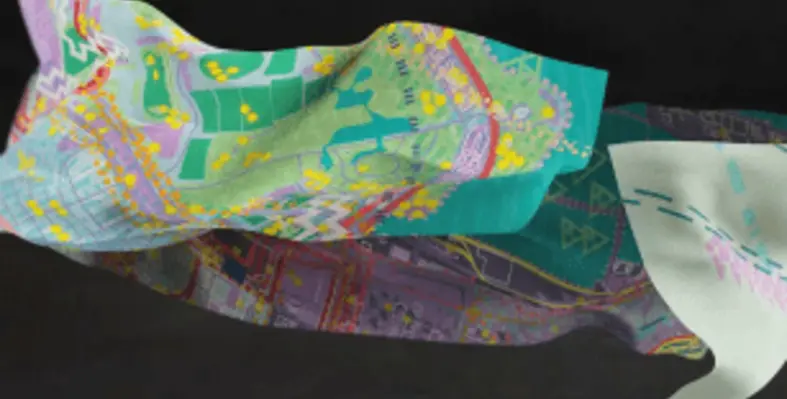Ahead of the World Economic Forum (WEF) conference, Siemens has unveiled a data visualisation for the city of Cape Town that illustrates how data is critical to transforming Africa’s urban centres into smart cities of the future
The brightly weaved fabric – inspired by Bo Kaap (one of Cape Town’s most distinct and colourful neighbourhoods) – outlines various infrastructure points of the city and its underlying data. Some of the points include buildings, marine traffic, railway congestion, zoning, waste-water plants, postal routes, trees, borders, pipelines and the ocean.
“These data patterns speak about unlocking the potential of African cities through digital ingenuity. Data on each infrastructure point gives greater insight on the challenges being faced in the city, and helps leaders make smart urban planning decisions in future,” said Keshin Govender, head of corporate communications at Siemens for Southern and Eastern Africa.
Siemens developed the first telegraph line between Cape Town and Simonstown in 1860. In 1892, Siemens constructed the first public power station (Molteno Dam) and in 1927, it electrified the Table Mountain cableway. In 1988, the multinational was the electrical and mechanical subcontractor for the construction of the Hugenot Tunnel. In 2007, Siemens commissioned the first new power stations in democratic South Africa (Ankerlig and Gourikwa).
In 2010, the first hybrid laboratory was constructed by Siemens at the Cape Gate Mediclinic and five years later it completed the Sere Wind farm. Earlier this month, Cape Town was named Africa’s leading digital city, with its economic centre contributing nearly three-quarters of GDP in the Western Cape and nearly US$330mn in foreign direct investment.
The city has adopted a resilience strategy which speaks to a compassionate, connected and capable city, where Capetonians collaborate across households, communities and institutions, to build collective responses to the current and future social, environmental and economic challenges.





